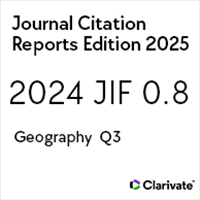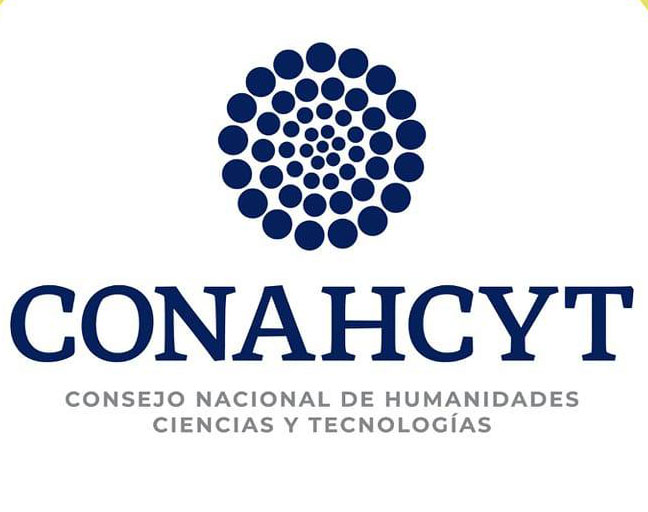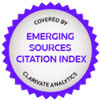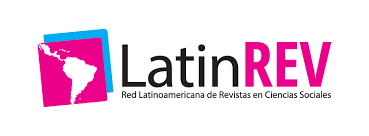¿Es importante la frontera en el debate sobre cobertura de salud? Un análisis de la localización de los proveedores de servicios médicos en el lado mexicano de la frontera
Does the border matter for health care? A study of medical services provider’s location at cities in the Mexican side of the border
https://doi.org/10.21670/ref.2017.36.a07
Palabras clave:
cuidado de la salud, frontera México-EE.UU, demanda transfronteriza, pobrezaResumen
En este trabajo se examinan los patrones de localización de los proveedores de servicios médicos en las ciudades fronterizas en el lado mexicano. La metodología se basa en análisis estadístico de microdatos en ambos lados de la frontera, empleando el Directorio Estadístico de Unidades Económicas (denue) como fuente primaria. Los resultados permiten identificar las siguientes actividades específicas con alta concentración relativa en las ciudades fronterizas: consultorios dentales del sector privado (naics código 621211) ci = 1.32, consultorios de medicina general del sector privado (naics código 621111) ci = 1.16, laboratorios médicos y de diagnóstico del sector privado (naics código 621511) ci = 1.02, otros consultorios del sector privado (naics código 621398) ci = 1.03. Adicionalmente para la ciudad de mayor tamaño en la muestra estudiada, se determinó la existencia de un cluster alrededor de los cruces fronterizos. Los resultados sugieren que las necesidades de servicios médicos transfronterizas en la región representan mecanismos de integración binacional con oportunidades sociales para la población local.Abstract This work examines medical services providers’ spatial location patterns at the Mexican cities in the us Mexico border as a case study. Formal statistical methods are applied using data sources for each side of the border with the primary source being the National Statistic Directory of Economic Units (denue) published by the Mexican Census Bureau. Results identify the following specific medical services activities with particular relative concentrations at the border city scale: private dental offices (naics code 621211) ci= 1.32, general medicine private offices (naics code 621111) ci = 1.16, private medical diagnostics labs (naics code 621511) ci = 1.02, and private general hospitals (naics code 621398) ci = 1.03. In addition a cluster pattern around border Crossings was found for the largest city included in the study. Results suggest that trans-border health care needs in the region represent a binational integration mechanism with social opportunities for the local populations.
Citas
Andersen, R. & Newman, J. F. (2005). Societal and individual determinants of medical care utilization in the United States. Milbank Quarterly, 83(4), 111-112.
Anzaldúa, G. (1999). Borderlands. La Frontera: The New Mestiza (2nd ed.). San Francisco, United States: Spinsters, Aunt Lute Books.
Bastida, E., Brown, H. S. 3rd & Pagán, J. A. (2008). Persistent disparities in the use of health care along the US-Mexico border: an ecological perspective. American Journal Public Health, 98(11), 1987-1995.
Billings, S. B. & Johnson, E. B. (2012). The location quotient as an estimator of industrial concentration. Regional Science and Urban Economics, 42(4), 642-647.
Bustamante, A. V., Laugesen, M., Caban, M., & Rosenau, P. (2012). United States-Mexico cross-border health insurance initiatives: Salud Migrante and Medicare in Mexico. Pan American Journal of Public Health, 31(1), 74–80.
Clemans-Cope, L., Long, S. K., Coughlin, T. A., Yemane, A. & Resnick, D. (2013). The Expansion of Medicaid Coverage under the ACA: Implications for Health Care Access, Use, and Spending for Vulnerable Low-income Adults. Inquiry, 50(2), 135-149.
Consejo Nacional de Población (Conapo). (s.f.). Municipios 2010/2030. Retrieved from https://datos.gob.mx/busca/dataset/proyecciones-de-la-poblacion-de-mexico/resource/fd942023-03ee-418c-8129-c548dd98cfa1
Damianov, D., & Pagán, J., (2013). Health insurance coverage, income distribution and healthcare quality in local healthcare markets. Health Economics, 22(8), 987-1002.
Davies, C. S. & Holz, R. K. (1992). Settlement evolution of ‘colonias’ along the US-Mexico border: The case of the Lower Rio Grande Valley of Texas. Habitat International, 16(4), 119-142.
Escarce, J. J. & Kapur, K. (2006). Access to and Quality of Health care. In M. Tienda & M. Faith (Eds.), Hispanics and the future of America (pp. 410-446). Washington, District of Columbia, United States: The National Academies Press.
Footman, K., Knai, C., Baeten, R., Glonti, K. & McKee, M. (2014). Cross-border health care in Europe 2014. Europe: World Health Organization.
Gerst-Emerson, K., Shovali, T. E. & Markides, K. S. (2014). Loneliness among very old Mexican Americans: Findings from the Hispanic established populations epidemiologic studies of the elderly. Archives of Gerontology and Geriatrics, 59(1), 145-149.
Getis, A. (2015). Spatial Association, Measures of A2-Wright. In J. D. Write (Ed.), International Encyclopedia of the Social & Behavioral Sciences (2nd ed.). Amsterdam, Netherlands: Elsevier.
Grineski, S. E., Staniswalis, J. G., Peng, Y. & Atkinson-Palombo, C. (2010). Children’s asthma hospitalizations and relative risk due to nitrogen dioxide (NO2): Effect modification by race, ethnicity, and insurance status. Environmental Research, 110(2), 178-188.
Hansen, E. R. (2006).Women's daily mobility at the US-Mexico Border. In D.J. Mattingly & E. R. Hansen (Eds.), Women and Change at the U.S.–Mexico Border: Mobility, Labor, and Activism (pp. 36-38). Arizona, United States: The University of Arizona Press.
Instituto Nacional de Estadística y Geografía (Inegi). (2015). DENUE, Actividad económica. Servicios de salud y de asistencia social. Retrieved from http://www.beta.inegi.org.mx/app/descarga/ficha.html?tit=388&ag=0
Jabbari, S., Fitzmaurice, T., Munoz, F., Lafuente, C., Zentner, P. & Bustamante, J. G. (2015). Cross-Border Collaboration in Oncology: A Model for United States–Mexico Border Health. International Journal of Radiation Oncology Biology Physics, 92(3), 509-511.
Krueger, P. M., Bhaloo, T. & Vaillancourt, P. (2009). Health Lifestyles in the United States and Canada: Are We Really So Different? Social Science Quarterly, 90(5), 1380-1402.
Magilvy, J. K., Congdon, J. G., Martinez, R. J., Davis, R. & Averill, J. (2000). Caring for our own: Health care experiences of rural hispanic elders. Journal of Aging Studies, 14(2), 171-190.
Manzanares, J. L. (2013). Pobreza y uso de seguro médico entre la población de origen mexicano en la frontera: la región del valle del rio grande Texas. Análisis Económico, XVIII, 219-240.
Maril R., (1989). Poorest of Americans: The Mexican-Americans of the Lower Valle del Rio Grande of Texas. United States: University of Notre Dame Press.
McKee, M. & Belcher, P. (2008). Cross Border Health Care in Europe. British Medical Journal, 337(7662), 124-125.
Mier, N., Ory, M. G., Zhan, D., Conkling, M., Sharkey, J. R. & Burdine, J. N. (2008). Health-related quality of life among Mexican Americans living in colonias at the Texas–Mexico border. Social Science & Medicine, 66(8), 1760-1771.
Ortiz, L., Arizmendi, L., & Cornelius L. J. (2004). Access to health care among Latinos of Mexican descent in colonias in two Texas counties. Journal Rural Health, 20(3), 246-252.
Pilz, J. & Spöck, G. (2008). Why do we need and how should we implement Bayesian kriging methods. Stochastic Environmental Research and Risk Assessment, 22(5), 621-632.
Rosaldo, R. (1993). Culture and truth: The remaking of social analysis. Boston, United States: Beacon Press.
Sassen, S. (2013). When Territory Deborders Territoriality. Territory, Politics, Governance, 1(1), 21-45. doi: 10.1080/21622671.2013.769895
Sohn, C. & Lara-Valencia, F. (2013). Borders and cities: perspectives from North America and Europe. Journal of Borderland Studies, 28(2), 181-190.
Su, D., Pratt, W., Salinas, J., Wong, R. & Pagán, J. A. (2013). Rural‐Urban Differences in Health Services Utilization in the US‐Mexico Border Region. The Journal of Rural Health, 29(2), 215-223.
Tscheulin, D. & Drevs, F. (2007). Europe and health: national health care systems and the effects of European integration. Journal for Public and Nonprofit Services, 30(4), 436-448.
United States Census Bureau. (2012). Sector 11--Agriculture, Forestry, Fishing and Hunting. Retrieved from https://www.census.gov/eos/www/naics/2012NAICS/2012_Definition_File.pdf
United States Census Bureau. (2015). American Community Survey (ACS). Retrieved from https://www.census.gov/programs-surveys/acs
Wallace, S. P., Mendez-Luck, C. & Castañeda, X. (2009). Heading South: Why Mexican Immigrants in California Seek Health Services in Mexico. Medical Care, 47(6), 662-669.
Whiteman, R. G. (2011). Medical tourism and bariatric surgery. Surgery for Obesity and Related Diseases, 7(5), 652-654.
































